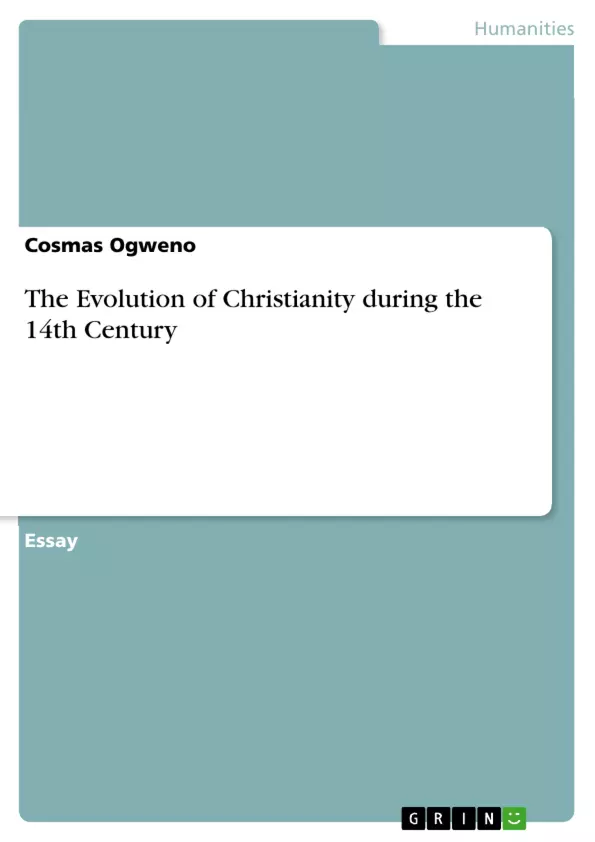All along during the past many centuries there were cases of increased trends of differentiation between the official clergies that were in control of the sacraments and also overseeing the body of the faithful and the laity. Indeed what mostly formed part of the debates concerned with the medieval Christianity was a result of the records from these authorities.
Inhaltsverzeichnis (Table of Contents)
- The most important to the religious attitudes of the fourteenth century between the institutional church and individual expressions of piety
- Conclusion on Boccaccio's attitudes towards Christianity
- How the presence of Jews and Muslims complicate our understanding of religious belief in medieval Europe
Zielsetzung und Themenschwerpunkte (Objectives and Key Themes)
This text explores the complexities of religious attitudes and practices in the 14th century, focusing on the tension between the institutional church and individual expressions of piety. It examines how this tension manifested itself in various forms, from the rise of dissenting groups to the evolving nature of Christianity as a cultural tradition.
- The relationship between the institutional church and individual religious expression
- The influence of cultural traditions on religious beliefs
- The emergence of dissenting groups and their challenges to church authority
- The impact of the Protestant Reformation on the religious landscape
- The complexities of interfaith relations in medieval Europe
Zusammenfassung der Kapitel (Chapter Summaries)
- The first chapter delves into the religious dynamics of the 14th century, highlighting the growing gap between official church doctrine and the diverse spiritual practices of the laity. It explores how the emergence of individual reformers like St. Francis of Assisi and the rise of dissenting groups like the Waldenses and the Hussites challenged established religious authority.
- The second chapter examines Boccaccio's portrayal of Christianity in his Decameron, analyzing his perspective on the cultural centrality of chivalric ideals and his criticisms of the Catholic Church's corruption.
- The final chapter discusses the complex interplay between Muslim, Jewish, and Christian communities in medieval Europe. It emphasizes the historical context that informs their relationships, recognizing both periods of dialogue and conflict.
Schlüsselwörter (Keywords)
The primary focus of this text is on the development of religious attitudes and practices in medieval Europe. Key themes include the institutional church, individual piety, dissenting groups, the Protestant Reformation, interfaith relations, and the influence of cultural traditions on religious belief.
- Quote paper
- Cosmas Ogweno (Author), 2015, The Evolution of Christianity during the 14th Century, Munich, GRIN Verlag, https://www.grin.com/document/311852



